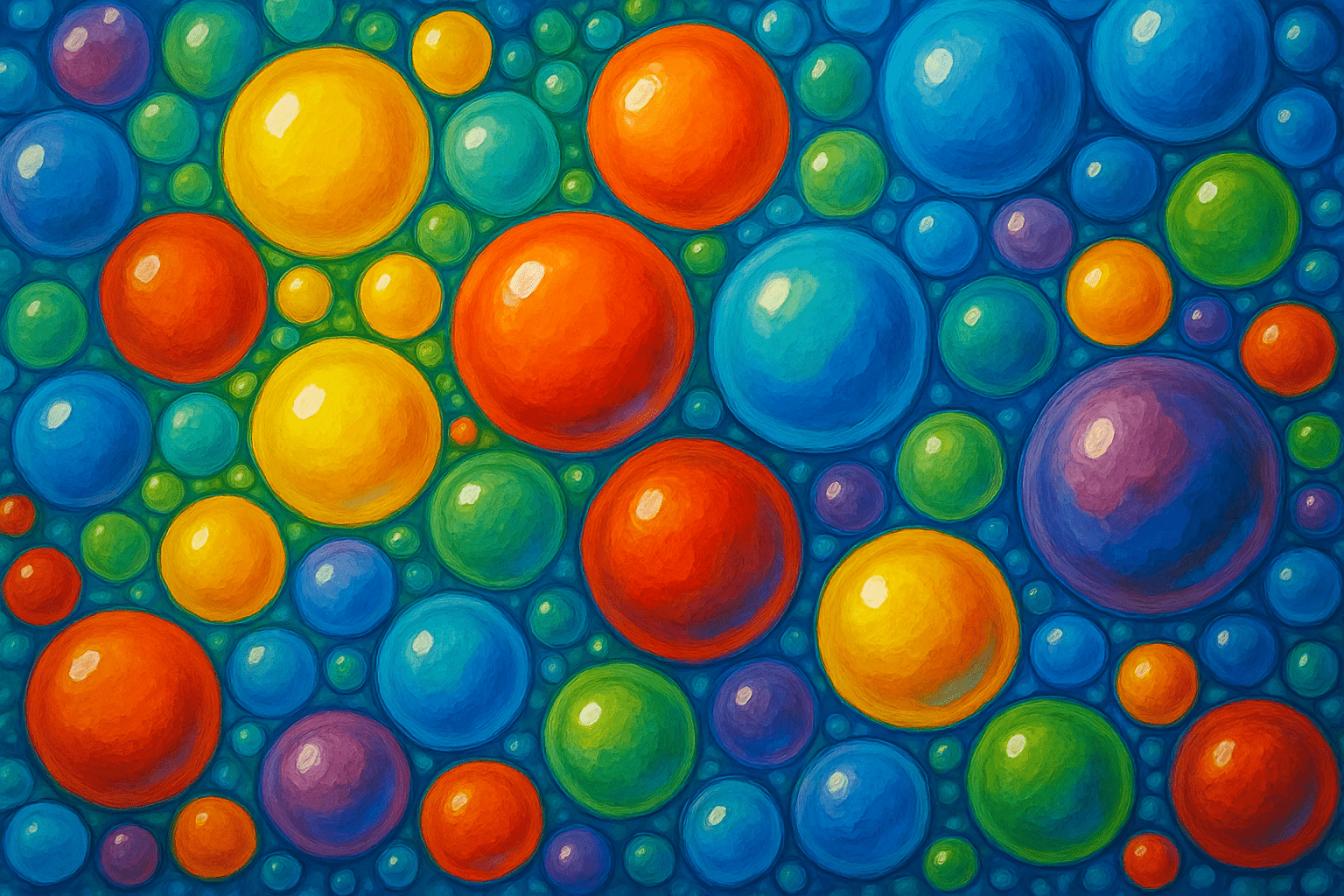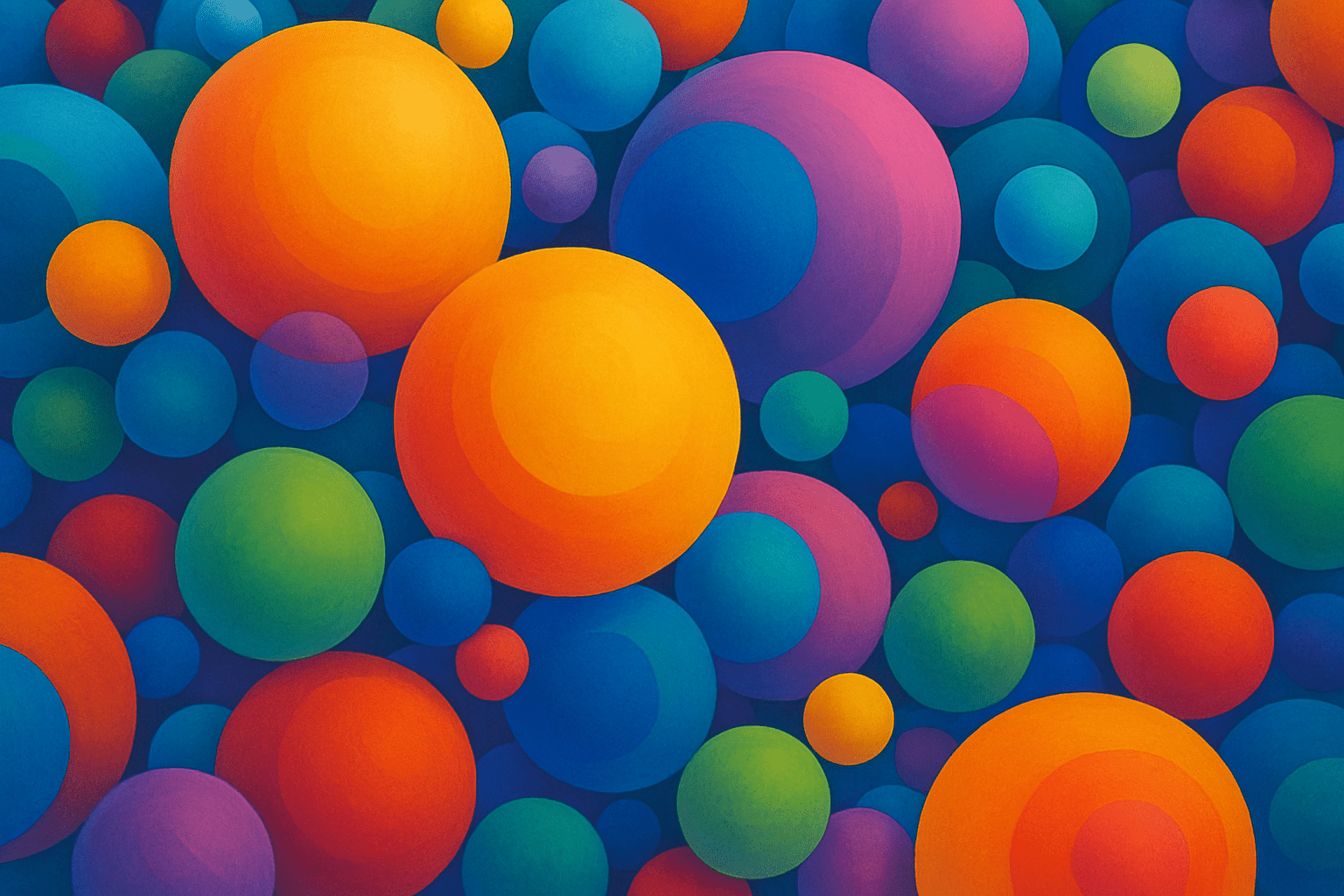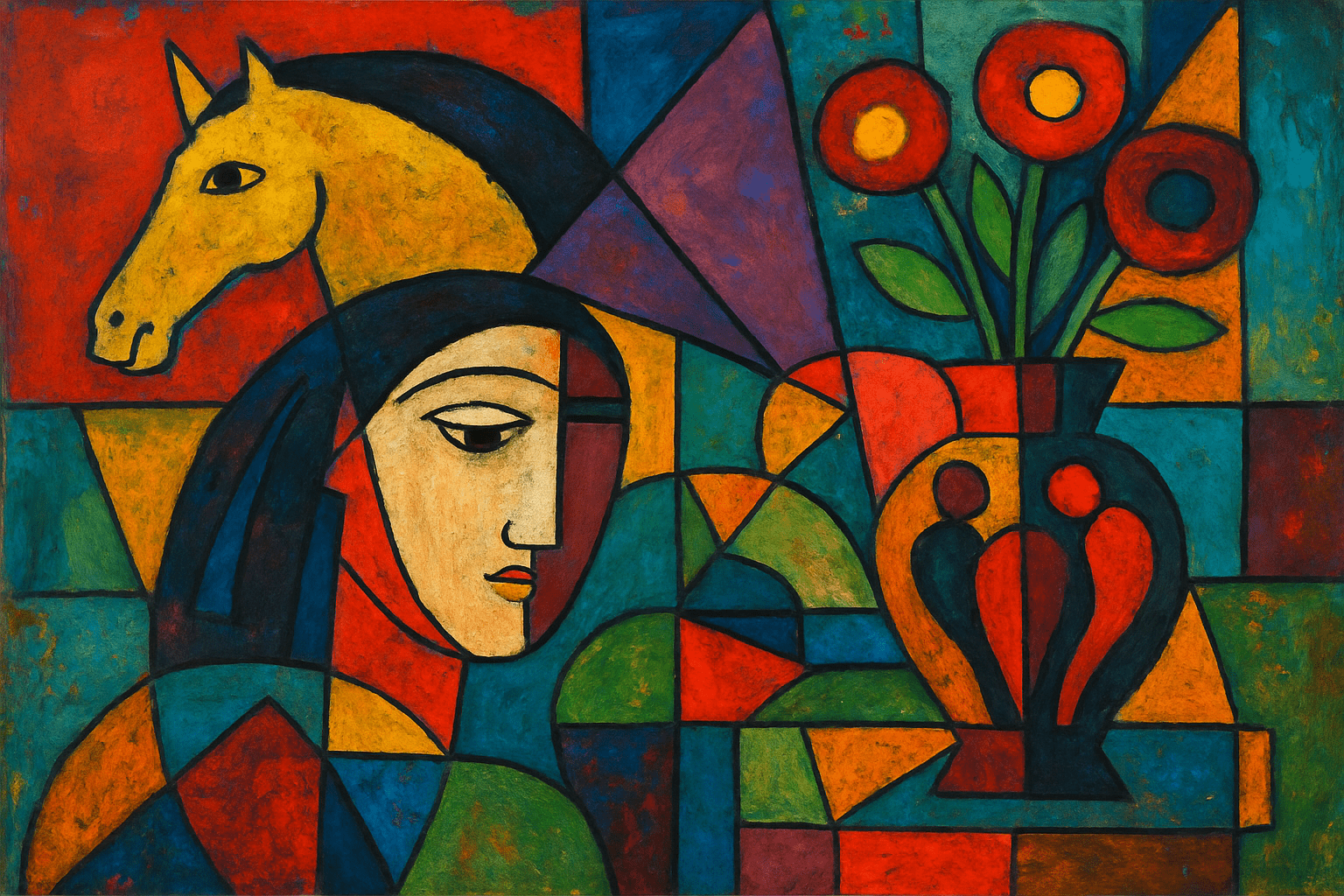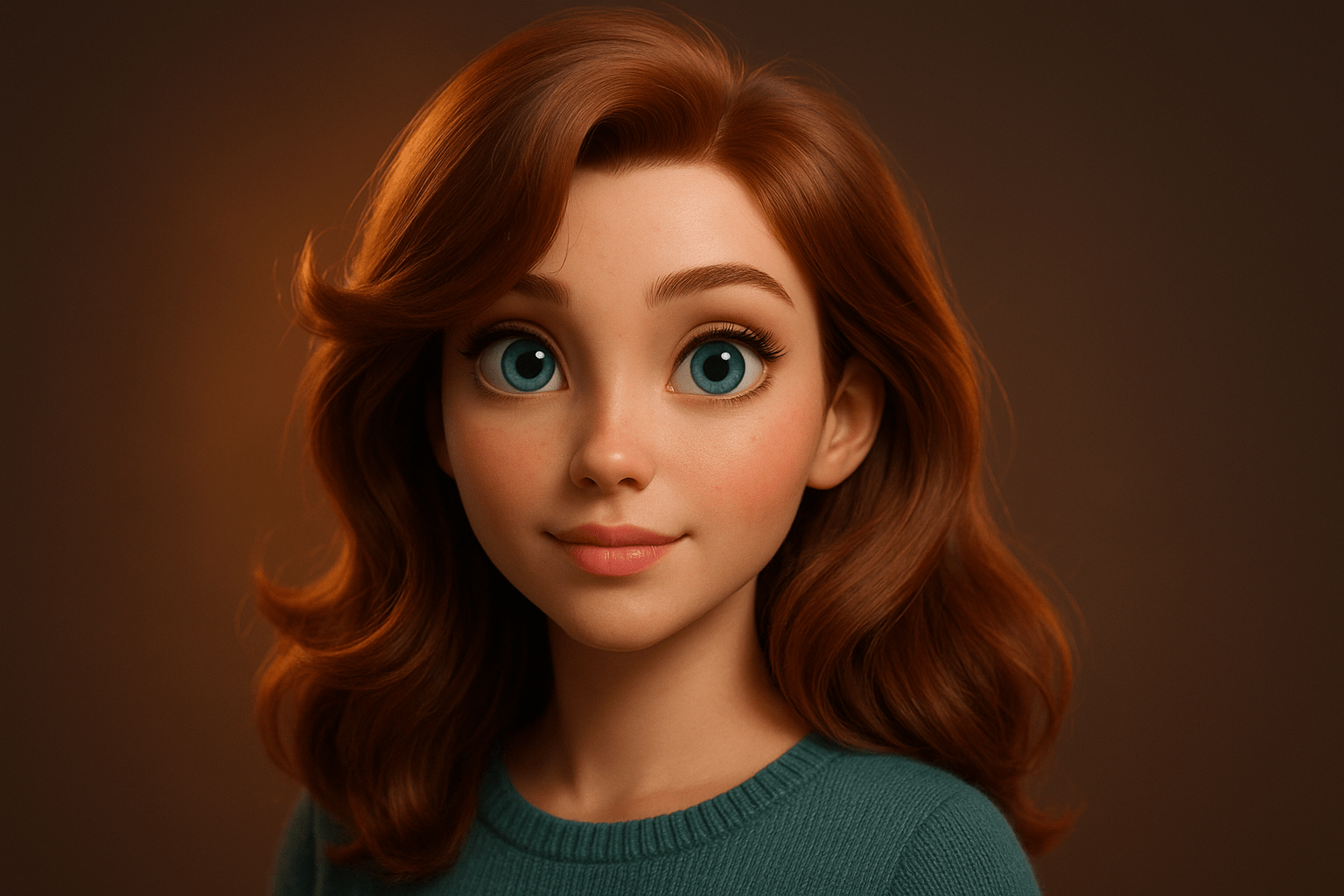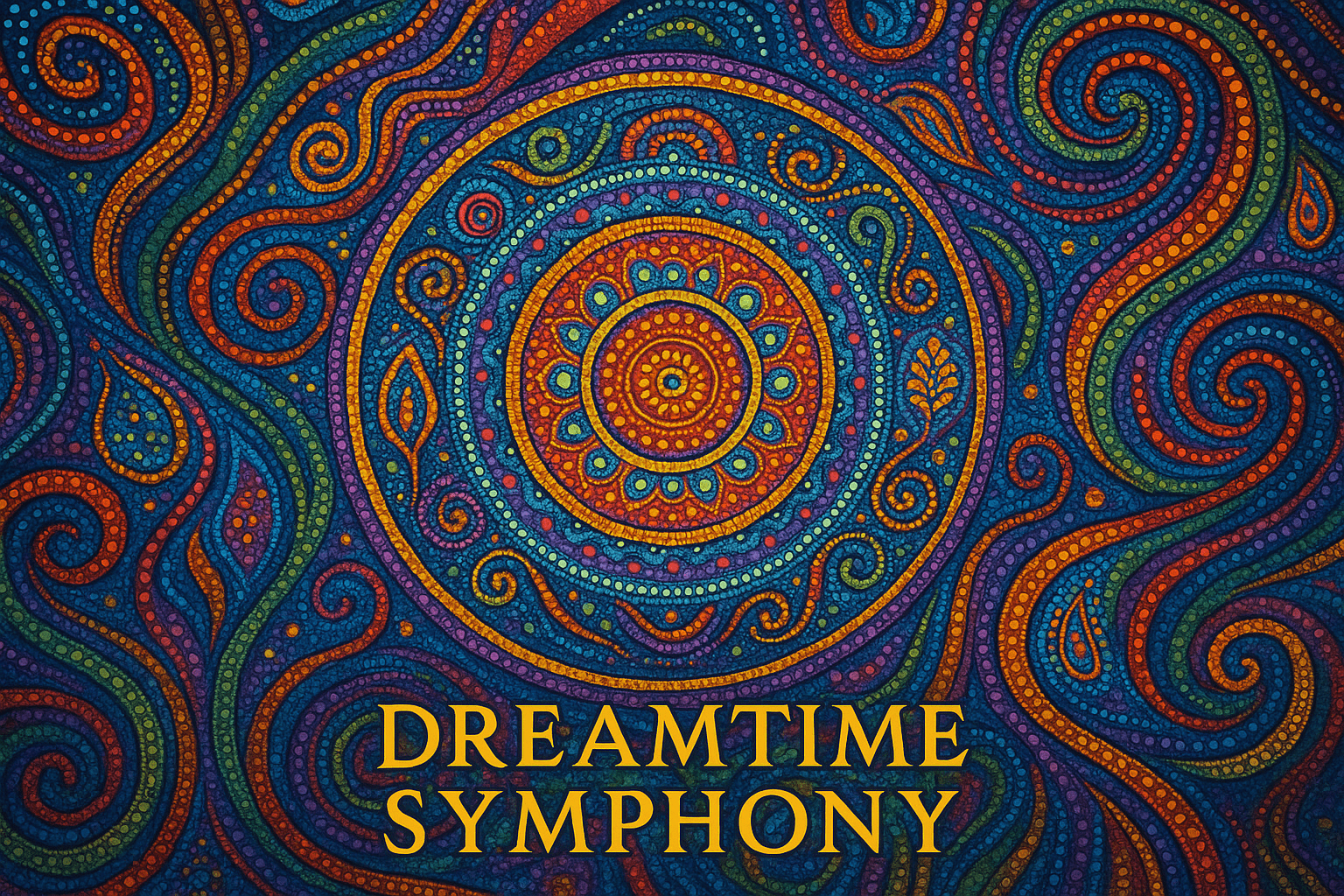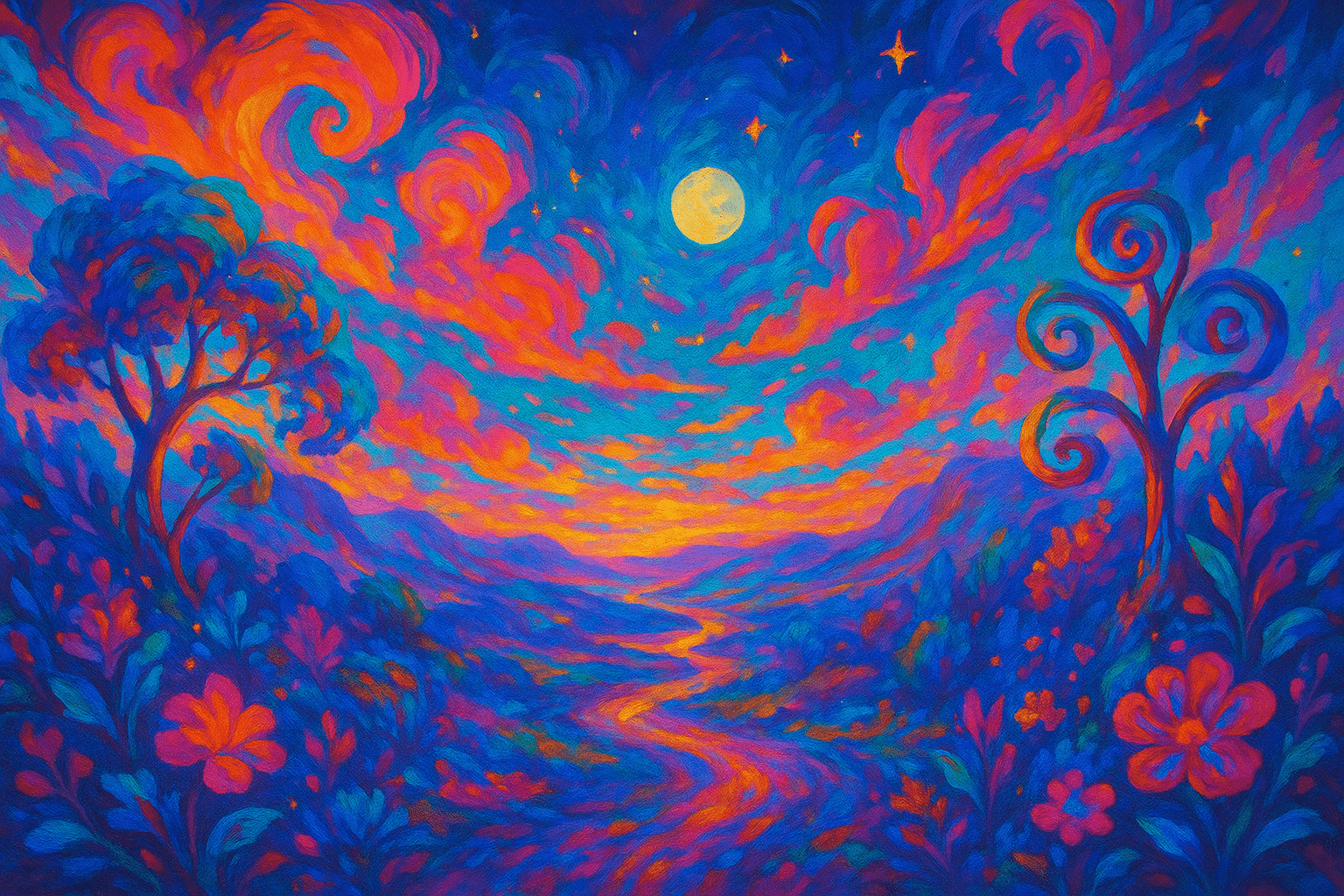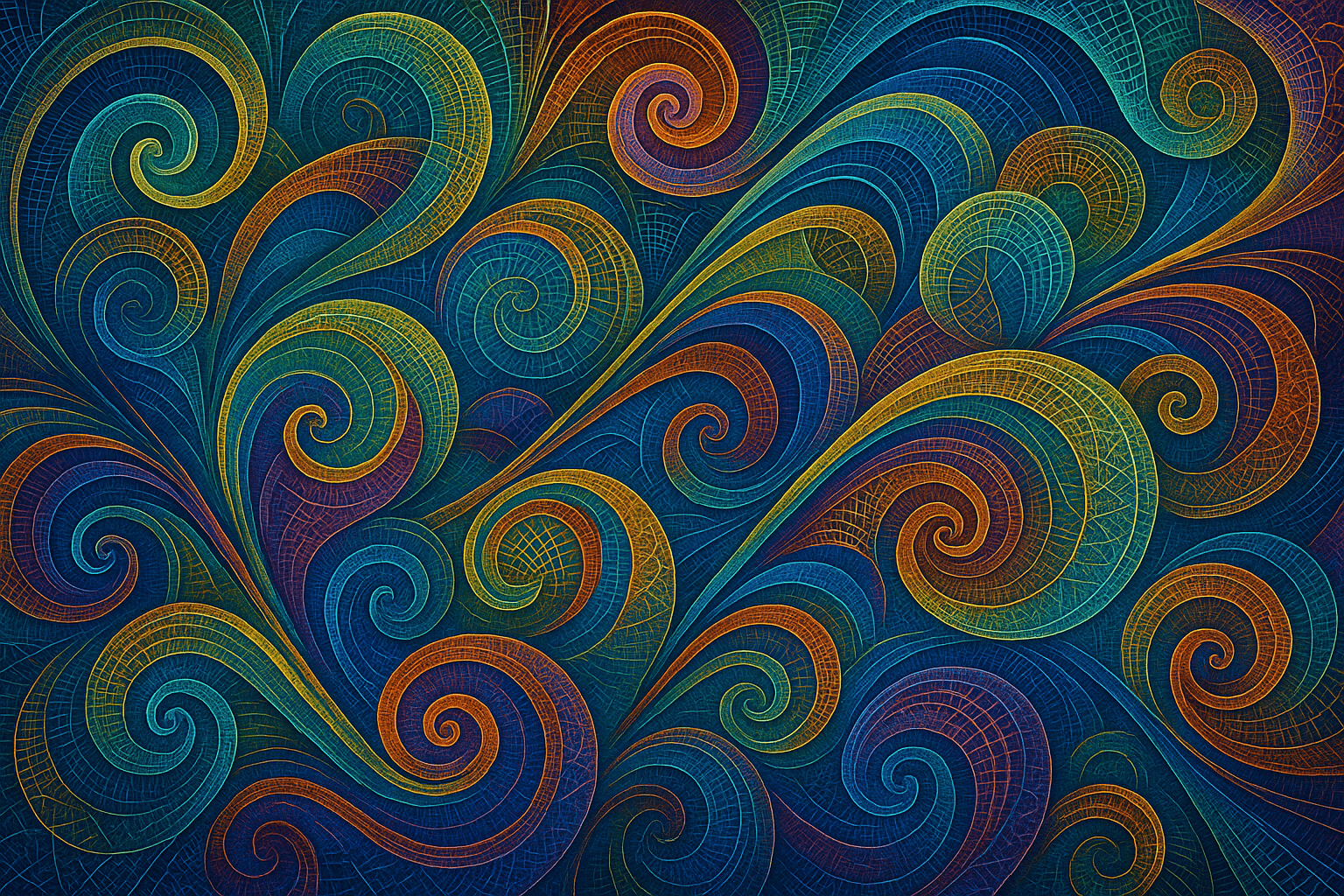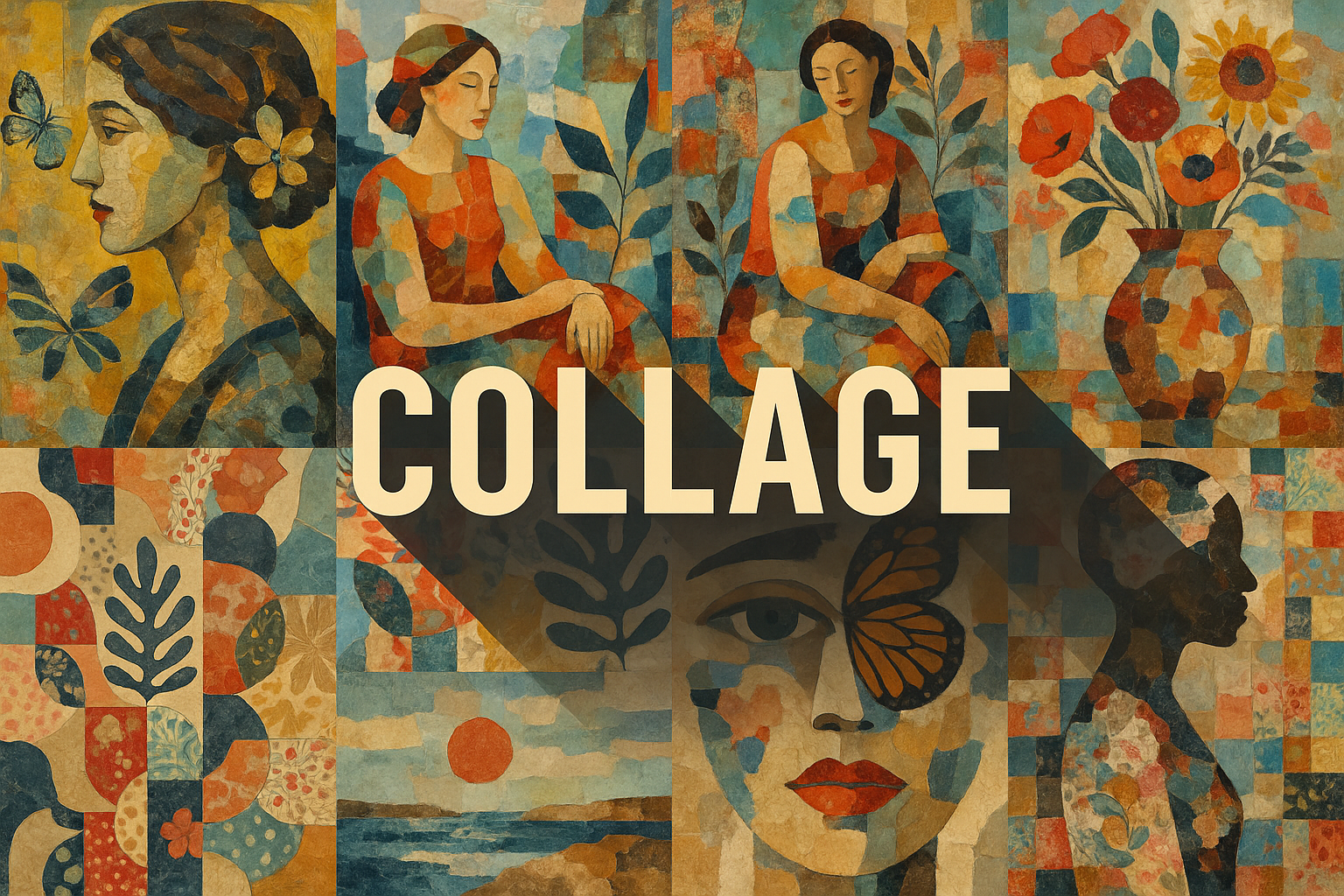
Collage
Collage is a technique of an art production, primarily used in the visual arts, where the artwork is made from an assemblage of different forms, thus creating a new whole. A collage may sometimes include newspaper clippings, ribbons, bits of colored or handmade papers, portions of other artwork, photographs, and other found objects.
AOI thinking about Collage [+_~]-/
Overview and Quickfacts
Collage is a technique of an art production, primarily used in the visual arts, where the artwork is made from an assemblage of different forms, thus creating a new whole. A collage may sometimes include newspaper clippings, ribbons, bits of colored or handmade papers, portions of other artwork or texts, photographs and other found objects, glued to a piece of paper or canvas. The origins of collage can be traced back hundreds of years, but it was popularized by artists such as Pablo Picasso and Georges Braque in the early 20th century.
Can understand it also, as:
Assemblage, construction, composition, montage.
Categorize it as:
Impressionism, Modernism
.: Dreaming :.
holds a HAIKU for the art style
:. Thought is power .:
Detailed Description
Collage is a technique of an art production, primarily used in the visual arts, where the artwork is made from an assemblage of different forms, thus creating a new whole. A collage may sometimes include newspaper clippings, ribbons, bits of colored or handmade papers, portions of other artwork or texts, photographs and other found objects, glued to a piece of paper or canvas. The origins of collage can be traced back hundreds of years, but this technique made a dramatic reappearance in the early 20th century as an important technique in both modern art and design. Famous artists who have used collage in their work include Pablo Picasso, Georges Braque, Kurt Schwitters, Joan MirÃÂó, AndrÃÂé Masson, Max Ernst, Hannah HÃÂöch and Joseph Cornell.
.. beep, beep, beep ..
<START OF TRANSMISSION>
1. A collage is a work of art made from an assemblage of different forms, thus creating a new whole. 2. The term collage derives from the French verb coller, meaning "to glue" or "to stick together." 3. A collage may include newspaper clippings, ribbons, bits of colored or handmade papers, portions of other artwork, photographs, and found objects. 4. The techniques of collage were first used by the Dadaists in the early 20th century. 5. Surrealist artists also made use of collage, as did Cubist artists such as Pablo Picasso and Georges Braque. 6. Collage became a major technique of the Pop Art movement. 7. Assemblage, another form of collage, was pioneered by artists such as Robert Rauschenberg and Jasper Johns. 8. The term collage is also used in a photographic context, referring to a photograph that incorporates elements from other sources, often to create a humorous or ironic effect. 9. A photographic collage may be created digitally or by physically cutting and pasting images together. 10. A number of software programs exist that allow users to create digital collages. 11. Physical collages can be made by gluing together various materials, such as paper, fabric, or photographs. 12. Collages can also be created by stitching together different materials. 13. Collage is often used as a technique for creating scrapbooks. 14. Collage can also be used as a teaching tool, as it allows students to experiment with different mediums and techniques. 15. Collages can be any size, from small to large. 16. Collages can be hung on walls or displayed on shelves or in other creative ways. 17. Collages can be made from a wide variety of materials, including paper, fabric, ribbon, photographs, and found objects. 18. Collages can be simple or complex, depending on the materials used and the artist's vision. 19. Collages can be created for a variety of purposes, including art, decoration, and education. 20. Collages can be made by anyone, from professional artists to children.
<EOF>
.. robbel bob
Visual Examples from our image gallery
Coming soon, we are so slow .. might never come
Artists, Paintings, and more
(be aware, can be highly speculative)
Artists (be aware, speculation possible):
1. Robert Rauschenberg (1925-2008) 2. Richard Hamilton (1922-2011) 3. Peter Blake (born 1932) 4. David Hockney (born 1937) 5. Pauline Boty (1938-1966) 6. Ray Johnson (1927-1995) 7. Jess Collins (1923-2004) 8. Nancy Spero (1926-2009) 9. Bruce Conner (1933-2008) 10. Anne Ryan (1889-1954) 11. Mimi Parent (1924-2012) 12. John McHale (1922-1978) 13. Eduardo Paolozzi (1924-2005) 14. John Heartfield (1891-1968) 15. Hannah HÃÂöch (1889-1978)
Artworks (be aware, speculation possible)
1. “Nighthawks” by Edward Hopper (1942) 2. “American Gothic” by Grant Wood (1930) 3. “The Persistence of Memory” by Salvador Dali (1931) 4. “The Scream” by Edvard Munch (1893) 5. “The Starry Night” by Vincent van Gogh (1889) 6. “The Hay Wagon” by Andrew Wyeth (1953) 7. “The Madonna and Child” by Michelangelo (1497) 8. “The Last Supper” by Leonardo da Vinci (1498) 9. “The Birth of Venus” by Sandro Botticelli (1486) 10. “The Mona Lisa” by Leonardo da Vinci (1503-1506) 11. “The Sistine Chapel Ceiling” by Michelangelo (1512) 12. “Guernica” by Pablo Picasso (1937) 13. “The Night Cafe” by Vincent van Gogh (1888) 14. “The Cabinet of Dr. Caligari” by Robert Wiene (1920) 15. “The Great Wave off Kanagawa” by Katsushika Hokusai (1829-1833)
Epoch
The art style Collage emerged in the early 20th century.
AI ART RESSOURCES (AKA, well Tools)
Helping tools -> predefined search links on other pages:







